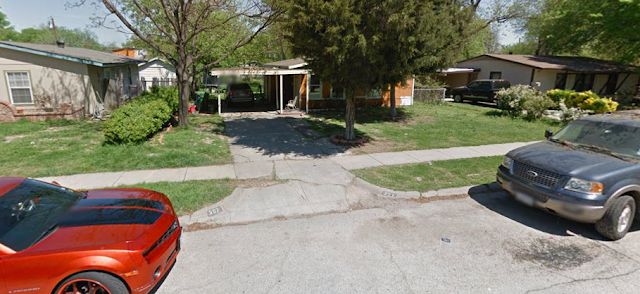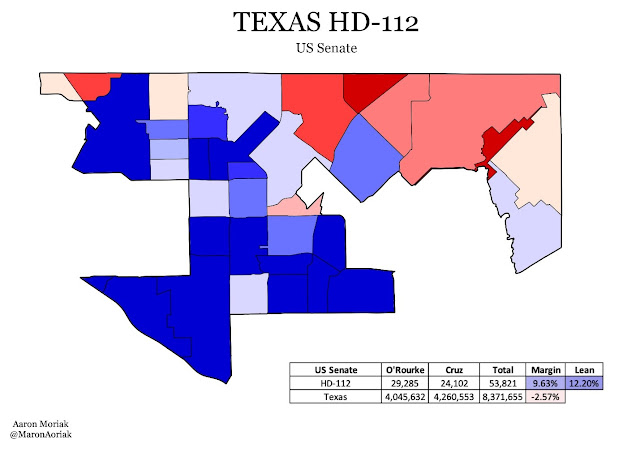Trends are More Predictable Than They Seem
This will be a big theme here, though we won't really drive it home in the first article. There's a basic issue that after you adjust for national margin elections are actually generally a continuation of trends that only rarely reach points of inflection. Note that this also requires separating the different regions in Texas that exist to look at the trends.
The General Framework
The general framework shall be that the Presidential elections have had 5 big "Trend Break" elections. These are:
1. The Eisenhower Earthquake - 1952

Essentially Eisenhower broke the state wide open in 1952 and the Democrats were never especially dominant. Even after adjusting for national margin, Ike did really well in every single region of Texas.
Why this happened is difficult to say, but the trends were permanent. The Democrats under Truman had become more assertive in hinting their support of civil rights, the Republicans had become ambiguous. While most historians would say that say that Republicans were clearly more supportive of Civil Rights in this period, it may be that the difference just wasn't large enough to justify.
Eisenhower, of course was born in Texas. However we do not see a significant rebound in the vote share(adjusted for national margin) for Democrats in 1960 in the Texas election. For whatever reason, be it civil rights or some other factor like the cold war, Texas would no longer be a Democratic stronghold.
2, The Nixon Sunbelt Strategy - 1968

Richard Nixon is often noted as the evil mastermind of the Southern Strategy. I think that's a bit unfair, as there were many southern strategies throughout the history of the Republican party. Essentially, once Republicans began to accept that African American voters would never be re-enfranchised after Reconstruction ended they began fantasizing about how to appeal to the whites who actually could vote.
Of course, Nixon did do especially well, even adjusting for national margin, in the small towns of Texas in 1972. We'll get to that. But for now it's important to give Nixon credit for doing especially well in the burgeoning suburbs which contained largely upper middle class residents and intense population increases. These 11 counties will be discussed later, but essentially Nixon's innovation here seems to be a suburban strategy. One can hypothesize that many of these counties contained out of state residents from the North east and Midwest who would themselves have natural Republican loyalties.
3. The Reagan Revolution - 1980

Looking at small towns in Texas we see a pattern. They break extremely hard for Nixon. But in 1976 they break back to the Democrats. In fact, in the region we will define as "Red Texas", the Democrats were as strong as they had been in any election since 1952, adjusting for national margin. Looking at the Democratic Party in 1976 there was no indication that our current geographic polarization would eventually take hold.
It is the election of Reagan in 1980 that beings the consistent and inexorable increase in strength for the Republicans. Reagan had managed to be a competent Goldwater, combining libertarianism and coded racial dog whistles to pummel the Democratic Party in small southern towns.
4. The Kerry Rebound - 2004

It may seem hard to believe but the Texas Republican Party was already in some danger in 2004. The Democratic Party finally found its stride in both urban counties and pivotal "wealth counties" that had been moving to the GOP since 1968.
However it's important to note that the movement in the 3 urban counties (Travis, Harris and Dallas) was a lot more impressive than the movement in the pivotal wealth counties like Collin. Essentially the adjusted margin for the Democrats in the wealth counties moves back to the old, somewhat bad strength of the 1990s.
Whenever one discusses suburbs it's important to keep in mind that suburbs are incredibly diverse in their political affiliation. Some "exurby" suburbs are moving dramatically to the right. At any rate, because this analysis confines itself to counties we will not look at the "inner suburbs" like Richardson in Dallas County. However there is reason to believe these suburbs have started to break dramatically towards to the Democratic Party which would explain why the big 3 urban counties have moved as such.
5. El Hombre Obama- 2008

Karl Rove had a plan. The GOP would pour money and resources into outreach for Latinos to become Republican. In 2008, that plan died in Texas, and it may never recover. It was 2008 that probably sealed the fate of Texas for Republicans.
Exactly why this is so is hard to say. Perhaps George W. Bush just had an unusual and unsustainable appeal to Hispanic voters. Perhaps Sarah Palin brought on the inevitable "Midwest strategy" that brought us Trumpism, forsaking Hispanic voters who often live in states that are not usually battleground states. Or perhaps Obama, as the first black President, had a very strong appeal to Latinos that could not be matched on the GOP side.
And of course, one must also consider that when doing county analysis the percentage of Latino voters in heavily Latino counties is consistently increasing each year.
We will look at movement in 5 large, heavily Latino counties: Hidalgo, Bexar, El Paso, Cameron
and Webb. These five counties contain the cities of McAllen, San Antonio, El Paso, Brownsville and Laredo, respectively. Looking at the combined numbers, the Democratic margin has accelerated substantially in every election starting in 2008.




















